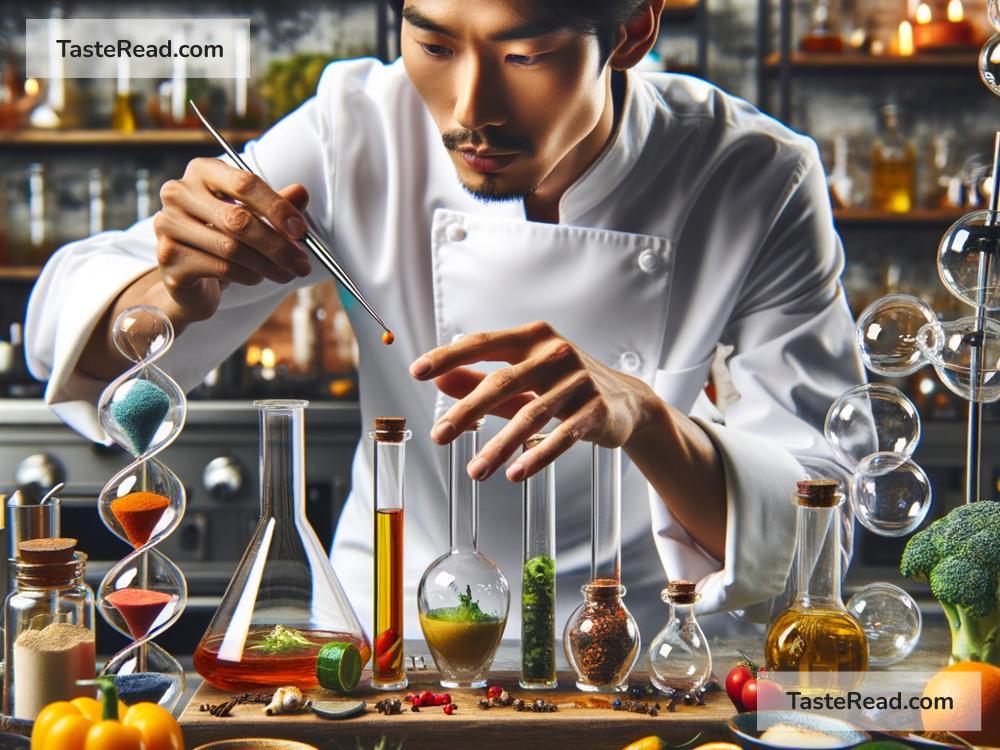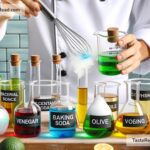The Science of Cooking with Chemical Audacity: Techniques and Tips
Cooking is like creating magic in the kitchen, but instead of potions and spells, we mix ingredients and use heat, time, and tools. Ever wondered why bread rises, meat gets tender, or chocolate melts so perfectly? The answer is science! Cooking is more than just following recipes; it’s unlocking the secrets of chemistry and physics to create dishes that are not just delicious but also fascinating. Let’s dive into the science of cooking with chemical audacity — a bold approach to making magic on our plates.
What is Chemical Audacity in Cooking?
Chemical audacity is about pushing boundaries using scientific techniques in the kitchen. It’s not just blending flavors but understanding why certain ingredients behave the way they do. Why does baking soda make cakes fluffy? Why does sugar caramelize into a golden syrup? By daring to experiment with the chemistry of cooking, we’re able to make smarter choices and even invent new recipes!
A bold cook learns to think like a scientist — observing, experimenting, and asking questions. Let’s explore some of the science-backed cooking techniques and hacks that can take your kitchen game to the next level!
1. Maillard Reaction: The Secret to Flavorful Food
Ever wondered why grilled meat smells so good or why toast is so tasty? The Maillard reaction is the answer. This fascinating chemical process happens when proteins and sugars in food are exposed to heat, creating complex, deep flavors and mouthwatering aromas.
Tips to Maximize Maillard Magic:
- Sear meats at high heat before slow cooking. This creates a flavorful crust on the outside.
- For roasted vegetables, drizzle a bit of oil and cook them at high temperature. The Maillard reaction happens best in dry environments (like baking or frying).
The next time you smell that irresistible aroma, thank chemistry!
2. Using Acids to Transform Food
Acids like lemon juice, vinegar, or buttermilk can do more than add tangy flavor — they change the chemistry of your food! For example:
– Tenderizing Meat: Marinating meat in acidic mixtures breaks down tough proteins, making it juicier.
– Brightening Vegetables: Adding a splash of vinegar or lemon juice can enhance the color and flavor of your veggies.
– Fluffy Baked Goods: Acids react with baking soda to produce carbon dioxide bubbles, which give cakes and pancakes their airy texture.
Pro Tip:
Be careful not to over-marinate meat, as too much acidic exposure can make it mushy.
3. Emulsification: The Art of Mixing Oil and Water
Oil and water normally don’t mix — they’re like two kids who refuse to play together. But when we introduce emulsifiers like mustard, egg yolks, or honey, we bring them together in harmony. This is the science behind delicious sauces like mayonnaise, salad dressings, and hollandaise.
How to Master Emulsification:
- Use mustard or egg yolks as stabilizers.
- Slowly add oil while whisking vigorously.
- Don’t rush! Emulsification is about patience.
By understanding emulsification, you can say goodbye to lumpy dressings and hello to smooth, creamy sauces.
4. Understanding Heat: Cooking Methods Matter
Heat affects food in different ways. Cooking methods determine whether food is crispy, tender, or juicy. Let’s explore how science helps us choose the best technique:
– Conduction: When heat spreads directly from your pan to your food. Perfect for searing steaks.
– Convection: Hot air circulates around food (like in an oven), giving you evenly cooked dishes.
– Radiation: Heat comes from direct sources, like a grill or broiler — great for charred flavors.
Experiment:
Try steaming versus roasting vegetables. Steaming preserves nutrients and gives a clean taste, while roasting draws out deeper flavors through caramelization.
5. Sous Vide: Cooking with Precision
Sous vide (French for “under vacuum”) is a modern cooking technique that uses science to cook food evenly and precisely. Food is sealed in airtight bags and cooked in a water bath kept at a very specific temperature. This ensures perfect consistency — no overcooked edges or raw centers.
Why Sous Vide Works:
- Proteins stay tender because they’re cooked gently at the right temperature.
- Flavors are locked in due to the vacuum-seal process.
If you’re curious about experimenting with sous vide cooking, you’ll need a sous vide machine and some patience, but the results are worth it!
6. Playing with Pressure: How a Pressure Cooker Works
Pressure cookers work by increasing pressure inside the pot, which raises the boiling point of water. This makes food cook faster and helps tenderize beans, tough meats, and grains. It’s science speeding up your dinner prep!
Tips:
- Don’t overfill your pressure cooker.
- Add herbs and spices for better infusion during the cooking process.
7. The Role of Salt in Food Chemistry
Salt isn’t just about taste. It helps in various ways:
– Flavor Enhancement: Salt balances and heightens flavor.
– Water Retention: Brining meat in salty water keeps it juicy.
– Structure: In baking, salt strengthens gluten, giving bread texture.
Never underestimate the humble power of salt in transforming your cooking.
Final Thoughts: Cooking is Both Art and Science
The science of cooking with chemical audacity is about daring to ask, “What if?” It’s understanding the why behind your kitchen victories and failures and experimenting boldly to create something extraordinary. By tapping into techniques like the Maillard reaction, acid transformations, and emulsification, you not only improve your cooking skills but also gain a newfound appreciation for the chemistry behind each dish.
So the next time you step into the kitchen, be bold — think like a scientist and cook like an artist. Who knows? Your experiments might just lead to the discovery of your next signature dish!


